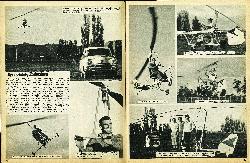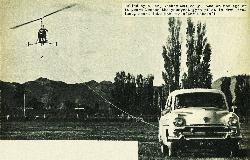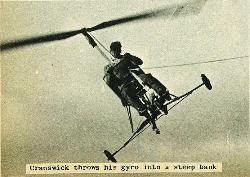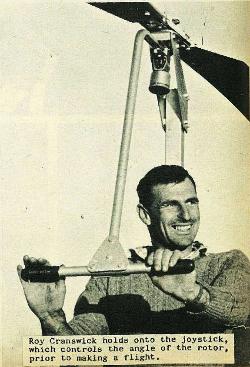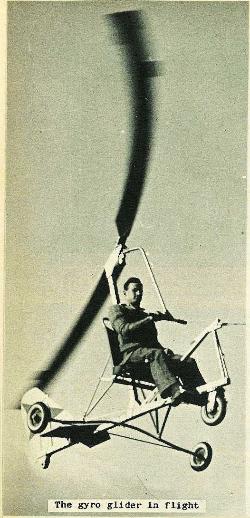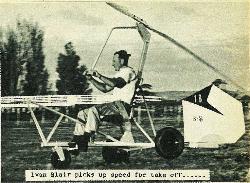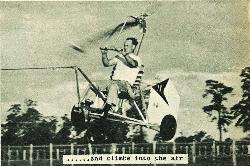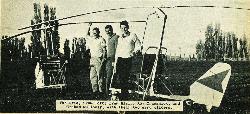12
Gyro-Gliding Enthusiasts
The gyro glider, which was developed by the German Navy in World War II for use as a spotting aircraft when towed behind a submarine, is now the subject of an exciting sport which has three very enthusiastic followers in Gisborne.
Heading the trio is Manutuke farmer Roy Cranswick who built his first model in 1957. Three models and eight years later, Roy is engaged in building a motorised version, and is president of the N.Z. Rotocraft Association.
The gyro operates in a similar way to a helicopter, except that its rotor is driven by airflow instead of a motor. Towed behind a car, with the rotor angled into the wind, it will pick up sufficient revolutions to lift it off the ground, and will then fly for as long as its air speed is greater than 30 m.p.h. The craft is virtually uncrashable, as the draught created by its falling would spin the rotor and enable it to be controlled.
The motorised version retains its free-wheeling rotor, but is driven forward by a conventional airplane propellor.
13


